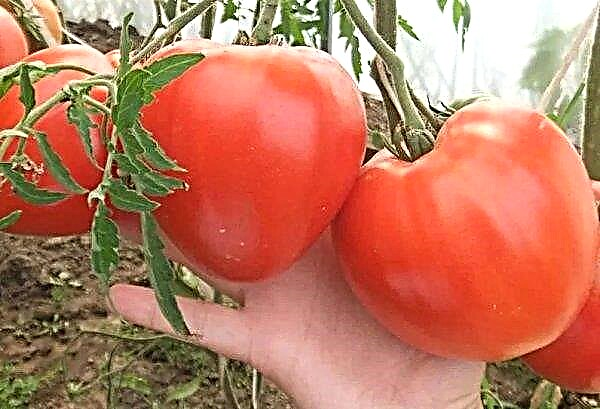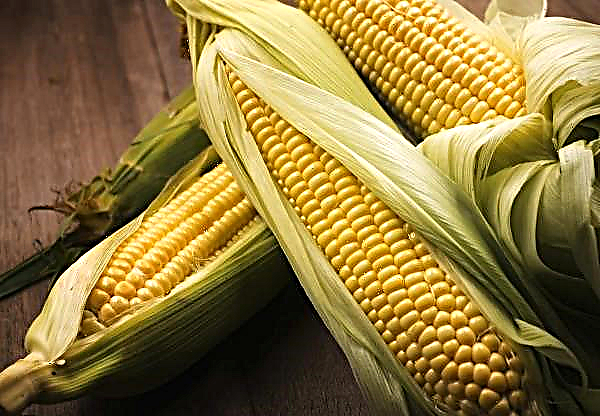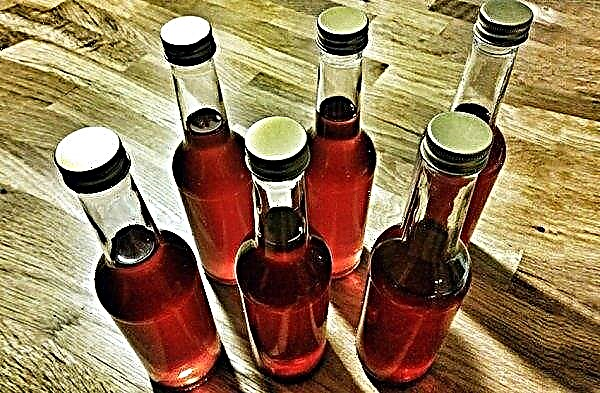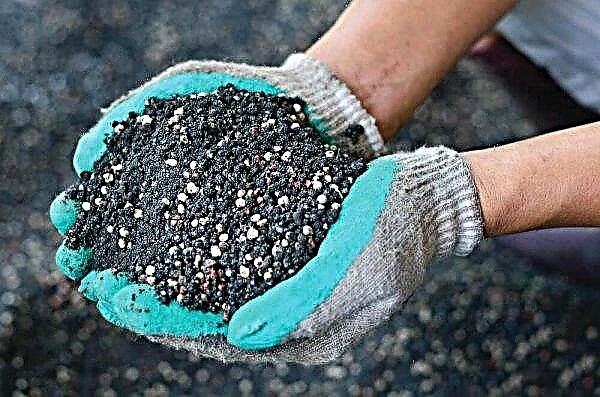Among the salts, one rarely encounters anything unusual, however, Armenian-style salted cauliflower is a very unusual dish. For all its simplicity of preparation, it will become an adornment for any table - not only due to its piquant taste, but also due to its unique appearance. This article will discuss how to salt cauliflower for the winter, how to choose the right quality vegetable, as well as practical storage tips.
Selection and preparation of ingredients
The first step is to responsibly approach the purchase of the main ingredient. When purchasing cabbage cauliflower pay attention to the following:
- make sure that the inflorescences are adjacent to each other tightly;
- the head should be without visible signs of damage, it should not be any kind of pollution, stains, plaque or traces of mechanical stress;
- it is necessary that the vegetable is dense and firm to the touch, has a weight commensurate with its volume (if the head of cabbage seems too light for you - most likely, chemicals used to grow to accelerate growth. This leads to the fact that the inflorescences become less juicy);
- inflorescences can be white, sometimes with a faint yellow hue;
- excessive manifestation of moisture on various parts of the vegetable may indicate spoilage of the product.
Important! Sometimes you can find exotic varieties of cauliflower in a variety of colors: purple, yellow, orange, green, pink. However, note: regardless of the variety, the color of the inflorescences should be uniform.
In the preparation of most dishes in which cauliflower is present, it is subjected to heat treatment. Previously, the cabbage heads are boiled or blanched, after which they can be salted, fried, stewed or pickled. However, in the following Armenian cabbage recipe, you don’t even have to boil it. This recipe does not require any special knowledge and skills, so even a novice cook can easily cope with it.
Armenian Cauliflower Recipe

Before cooking, be sure to prepare a suitable container. This can be a glass bottle, or, for example, a kitchen pot, a small bucket or a plastic container. Also oppression is needed, in the role of which, for example, a glass bottle filled with water can act.
70 10-12 days
Energy value per 100 g:
- Wash and sterilize the container in which the salting will be stored.
- Disassemble the cabbage for inflorescences and rinse thoroughly.
- Cut the vegetables into large pieces, chop the greens.
- Prepare the brine: boil a liter of water, add 2 tablespoons of salt.
- Put in a pre-prepared container all the components in layers, sprinkling with spices.
- After cooling the brine to about 40 ° C, pour the vegetables so that the water covers all layers.
- Cover the container with a cloth, crush it with oppression and keep it warm for 3-5 days. Then move it to a cool place for a week, after which the dish can be served on the table.

Features of storage at home
After cooking salted cabbage, it is important to ensure the correct storage conditions so that the product is not sour, dried up, and also retains all the beneficial properties. It is extremely simple to follow the storage rules, and for their implementation no additional equipment or special rooms are required - everything can be realized at home. First of all, you need to equip the room in which the vegetable will be stored.
A few simple tips:
- The optimum temperature for storing the workpiece is 0 ° C. Do not go beyond - + 2-5 ° C. Negative temperature values can adversely affect the product, as this leads to a change in the structure of the vegetable and the destruction of vitamins.
- The humidity indicator should be at around 60% or more. Otherwise, the top of the masonry may begin to dry out. If it is not possible to provide the necessary humidity, then you have to periodically look at the level of the brine (as mentioned earlier, it should completely cover all products).
- The place for storage should be chosen dark, protected from direct sunlight, as this can also lead to the destruction of vitamins and minerals.
Usually, the salty billet is stored in glass bottles, but this is far from the only acceptable option. Various metal containers will also come down as storage containers: basins, wooden tubs, etc. If possible, the product should be packaged in small containers. It is very sensitive to temperature changes, so the constant movement from the cellar to the table can lead to the fact that the product quickly deteriorates.Important! Store sauerkraut separately from other foods. She herself exudes a strong aroma and at the same time has the ability to actively absorb other odors. If it is not possible to store separately - at least it is worth choosing high-quality dishes.

Additional nuances regarding the preparation and storage of sauerkraut:
- Vegetable is best cut into large pieces. With this cooking method, healthy ingredients will be stored longer.
- To protect yourself from the appearance of mold, you can add a little sugar, cranberries, lingonberries to the pickling. In addition, these products will increase shelf life due to the formation of a natural preservative in brine.
- Also, the shelf life can be increased by additional sterilization, but this will deprive sauerkraut of a certain part of vitamins and minerals.
- If there is not enough brine and it does not completely cover the vegetable, you can add salt water to the tank, or store the workpiece under pressure.
Following the above tips will help extend the shelf life of sauerkraut for a long time, preserving its indescribable taste and all the useful components.Did you know? Cauliflower does not grow in the wild. Presumably, it was artificially bred from a variety of kale by Syrian fellahs, which is why it was called «Syrian»












